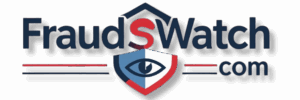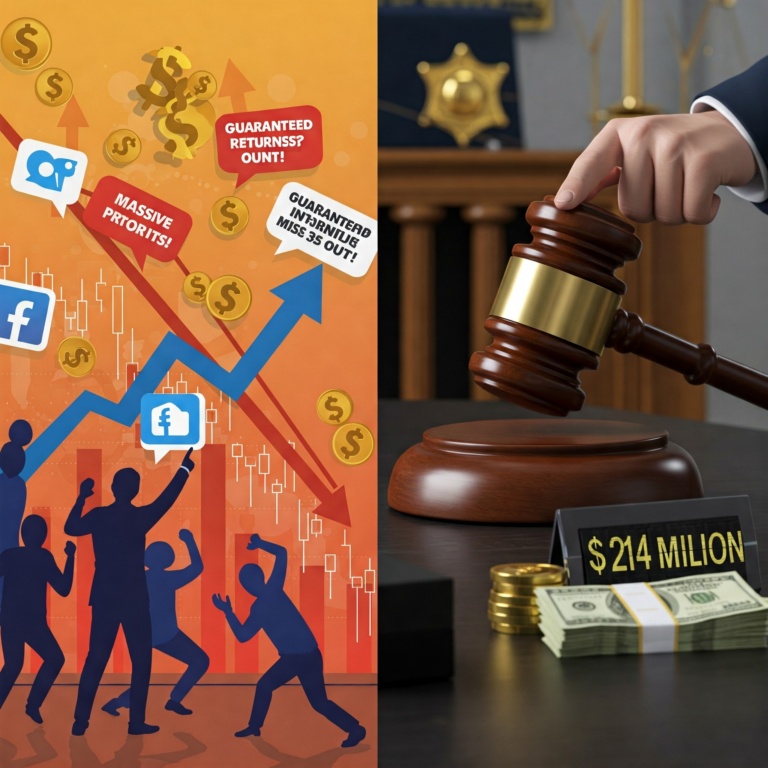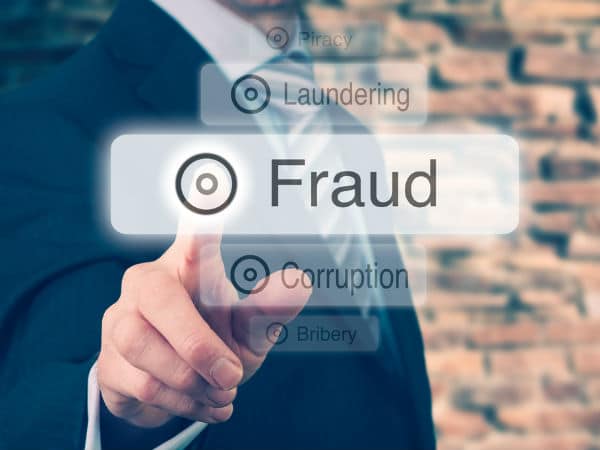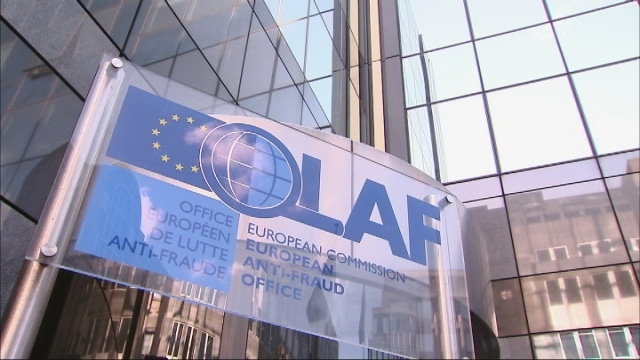A Felon’s Fortune: How the Jemel Lyles Case Exposes the Anatomy of America’s $200 Billion COVID Fraud Epidemic
The guilty plea of Jemel Lyles, a 43-year-old convicted felon from Washington, D.C., offers a stark and revealing portrait of a crime that defined an era. While on federal supervised release for a previous fraud conviction, Lyles methodically plundered a national emergency relief fund, stealing approximately $281,900 in Paycheck Protection Program (PPP) loans. His case, however, is far from an isolated incident of greed. It is a single, representative cell in a nationwide cancer of fraud that has metastasized across the United States. The Small Business Administration’s (SBA) Office of Inspector General (OIG) estimates that over $200 billion in potentially fraudulent COVID-19 Economic Injury Disaster Loan (EIDL) and PPP funds were disbursed, making it arguably the largest fraud in American history.
The story of Jemel Lyles is therefore more than the chronicle of one man’s crimes. It is a case study that exposes the anatomy of this unprecedented epidemic. By dissecting his methods, the systemic vulnerabilities he exploited, and the severe legal consequences he now faces, we can understand the broader dynamics of how the Coronavirus Aid, Relief, and Economic Security (CARES) Act became a trillion-dollar target. This report uses the Lyles case as a lens to explore the common typologies of pandemic fraud, the powerful legal framework marshaled for prosecution, and the historic federal response still grappling with the aftermath.
Anatomy of a Pandemic Fraud: A Case Study of Jemel Lyles
Jemel Lyles’s scheme was not the work of an amateur but of a seasoned criminal who recognized a golden opportunity. His actions provide a granular view into the tactics and mindset that fueled the nationwide surge in pandemic relief fraud.
The Recidivist’s Mindset: A Pattern of Deceit
A critical and telling detail of this case is that Lyles was already under federal supervision for a prior felony fraud conviction when he began his new crime spree. In 2018, he was convicted by a jury for conspiracy to commit wire fraud and money laundering, a scheme that earned him a 33-month prison sentence and an order to pay $72,000 in restitution. His latest scheme, which ran from April 2020 to February 2021, demonstrates that he wasted little time exploiting the CARES Act after its passage in March 2020.
This context reveals a significant vulnerability in the government’s response to the pandemic. The SBA OIG noted that in the rush to disburse funds, the agency created a “pay and chase” environment where the “allure of ‘easy money’ attracted an overwhelming number of fraudsters”. For a career criminal like Lyles, already skilled in financial deception and supposedly being monitored by the federal system, this was an irresistible target. His case represents a collision between a relief program designed for maximum speed and minimal friction and a criminal perfectly positioned to exploit it. This dynamic raises serious questions about the effectiveness of supervised release in preventing sophisticated financial criminals from re-offending, especially during a national crisis. As a direct result of his actions while under supervision, Lyles now faces an additional prison sentence of up to two years for this violation, on top of any sentence for the new fraud charges.
The Fraudster’s Toolkit: Forgery, Lies, and Identity Theft
Lyles employed a multi-pronged strategy, combining common fraud tactics with brazen identity theft to maximize his illicit gains. His methods serve as a textbook example of the schemes federal investigators have uncovered across the country.
First, he used the “inflation” tactic. For his companies, Green Capital Construction and Landscape, LLC, and JSL, Investments LLC, Lyles submitted fraudulent PPP applications that grossly inflated the number of employees and the monthly payroll costs. To substantiate these lies, he provided falsified payroll documentation and counterfeit tax forms, a classic method for illegitimately boosting the size of a PPP loan.
Second, he deployed a “disguise” tactic to circumvent a key program rule. PPP regulations explicitly made any business ineligible for funds if a felon on supervision held a 20% or greater ownership stake. Knowing this would disqualify him, Lyles fraudulently concealed his ownership interest in the companies on the loan applications, a deliberate act of deception to bypass the program’s minimal safeguards.
Finally, he escalated his crimes with a “theft” tactic, committing aggravated identity theft. Lyles used the personal identifying information of a friend and employee to apply for additional PPP loans in that individual’s name. The loan proceeds were then funneled into bank accounts to which Lyles was a signatory, giving him complete control over the stolen funds. This act elevated his crime from simple financial fraud to a more serious offense with severe, mandatory sentencing consequences.
The subsequent use of these funds exposes the core psychology of the pandemic fraudster. The money was not used for its intended purpose—to “maintain their payroll, hire back employees… and cover applicable overhead”. Instead, Lyles treated the nearly $282,000 as a personal slush fund, spending it on a home gym, jewelry, child-support payments, personal retail credit accounts, and private financial investments. This complete disregard for the program’s purpose mirrors the actions of countless other fraudsters who purchased Lamborghinis, Rolex watches, and luxury real estate, viewing a national lifeline as a personal lottery win.
A System Under Siege: How the CARES Act Became a Trillion-Dollar Target
The crimes of Jemel Lyles were made possible by systemic vulnerabilities created by the very design of the pandemic relief programs. To stop a full-scale economic depression, the U.S. government made a deliberate choice to prioritize speed over security, a decision that opened the floodgates to unprecedented fraud.
The “Pay and Chase” Doctrine: Speed Over Security
The CARES Act, a historic $2 trillion relief package enacted in March 2020, authorized the PPP and expanded the EIDL program to inject nearly $1.2 trillion into the struggling economy with unparalleled velocity. The central goal was to provide emergency financial assistance to prevent mass business closures and layoffs. To achieve this, the SBA OIG concluded that the agency “weakened or removed the controls necessary to prevent fraudsters from easily gaining access” to the programs.
This conscious trade-off created what officials have termed a “pay and chase” environment. The government’s primary objective was to push money out the door as quickly as possible, accepting that it would have to “chase” down fraudulent payments later. This policy choice had a predictable, if staggering, consequence. The FBI observed that criminals immediately shifted their focus to exploit these new, lightly guarded government programs. The massive scale of the resulting fraud was not merely an unfortunate side effect but a direct outcome of a foundational design philosophy that favored economic expediency over fiscal security.
The Scale of the Heist: Quantifying the Unprecedented Loss
The financial toll of this decision is breathtaking. The SBA OIG estimates that over $200 billion in potentially fraudulent funds were disbursed through the PPP and EIDL programs, which accounts for at least 17% of the total relief provided. The FBI, citing SBA data, breaks this down further, estimating
$64 billion in PPP fraud and a staggering $136 billion in EIDL fraud.
These figures are corroborated by independent analysis. One academic paper found that more than 15% of all PPP loans—some 1.8 million individual loans—showed clear indicators of potential fraud, such as mismatched data or suspicious business histories.
A particularly glaring vulnerability emerged from an unexpected corner: financial technology, or “fintech,” companies. To accelerate the distribution of funds, Congress authorized fintech lenders to participate in the PPP. While this increased the program’s reach, it also created a major conduit for fraud. Fintech lenders were responsible for approximately 29% of all PPP loans but accounted for
more than half of all suspicious loans issued. Their automated, often AI-driven, application systems were exploited by criminals who, in some documented cases, used photographs of Barbie dolls and mannequins to fool facial recognition checks and secure fraudulent loans. This “fintech paradox” reveals a crucial lesson for future relief efforts: technology that enables speed can also create immense vulnerability if its anti-fraud capabilities are not equally robust.
The Fraudster’s Playbook: Common Schemes and Lavish Lifestyles
While the methods varied in sophistication, a clear playbook emerged among those who sought to defraud the pandemic relief programs. These schemes ranged from simple opportunism by individuals to complex operations run by organized criminal networks, all sharing a common thread of brazen greed.
The Schemers: From Individual Opportunists to Organized Crime
Federal investigators have identified several recurring tactics used to steal PPP funds:
- Falsifying Information: The most common method involved inflating payroll figures and employee numbers, just as Jemel Lyles did.
- Creating Fictitious Businesses: Many fraudsters applied for loans using shell companies, dormant corporations, or entirely fabricated businesses with no real-world operations.
- “Loan Stacking”: Some criminals repeatedly applied for PPP loans for the same business from multiple different lenders, a practice known as loan stacking.
- Identity Theft: Sophisticated actors used stolen identities, often acquired from data breaches and purchased on the dark web, to submit applications, making the crimes harder to trace back to the perpetrators.
This fraud was not limited to lone actors. The Department of Justice (DOJ) has uncovered and prosecuted numerous organized crime rings. A prominent example is the Houston-based conspiracy led by Amir Aqeel, who orchestrated the submission of over 75 fraudulent PPP applications to steal more than $20 million. His network created fake payrolls and laundered the proceeds by cashing over 1,100 fraudulent paychecks at a complicit check-cashing business, ultimately using the money to purchase luxury cars like a Porsche and a Lamborghini.
The sheer audacity of the fraud was further highlighted by cases involving celebrities and public figures. Maurice Fayne, a star of the reality TV show “Love & Hip Hop: Atlanta,” was sentenced to over 17 years in prison for fraudulently obtaining a $2 million PPP loan. He used the funds to lease a Rolls-Royce, buy $85,000 in custom jewelry, and cover losses from a separate Ponzi scheme he was running. In another bizarre case, a New York man named
Sheng-Wen Cheng fraudulently obtained $2.8 million after submitting an application that listed famous athletes, actors, and public figures as his supposed employees.
Table 1: The High Price of Greed: A Gallery of Pandemic Profiteers
The following table summarizes some of the most audacious PPP fraud cases, translating abstract financial figures into tangible stories of criminal greed.
| Fraudster | Amount Stolen (Approx.) | Key Charges | Notorious Expenditures | Supporting Snippets |
| Jemel Lyles | $281,900 | Wire Fraud, Aggravated Identity Theft | Jewelry, home gym, personal investments, child support | |
| Maurice Fayne | $2 Million | Bank Fraud, Wire Fraud | Rolls-Royce, $85,000 in custom jewelry, funding a Ponzi scheme | |
| Amir Aqeel | $20 Million (Ring) | Wire Fraud, Money Laundering | Porsche, Lamborghini, luxury real estate | |
| Dinesh Sah | $17.3 Million | Wire Fraud, Money Laundering | Multiple homes, jewelry, luxury cars (e.g., Bentley) | |
| Sheng-Wen Cheng | $2.8 Million | Wire Fraud, Bank Fraud | Mercedes-Maybach, luxury condo, designer clothing |
The Legal Reckoning: Wire Fraud, Identity Theft, and the Consecutive Sentence Trap
As fraudsters like Jemel Lyles are brought to justice, the federal government is deploying a powerful legal arsenal to ensure severe punishment. The charges of wire fraud and aggravated identity theft, in particular, create a formidable sentencing framework designed to hold criminals accountable.
The Prosecutor’s Primary Weapon: Wire Fraud (18 U.S.C. § 1343)
The central charge in most PPP fraud cases is wire fraud. To secure a conviction under statute 18 U.S.C. §1343, prosecutors must prove four key elements: the existence of a scheme to defraud, the use of false representations, criminal intent, and the use of interstate wire communications—a condition met by virtually all online PPP loan applications.
The penalties for wire fraud are severe, including up to 20 years in federal prison (or 30 years if the fraud involves a financial institution) and fines up to $250,000 for individuals. While federal sentencing guidelines provide a starting point, judges have discretion and consider several factors, including the total financial loss, the sophistication of the scheme, the number of victims, and, crucially, the defendant’s criminal history. For a recidivist like Jemel Lyles, his prior fraud conviction is a significant aggravating factor that will almost certainly lead to a harsher sentence.
The “Sentence Multiplier”: Aggravated Identity Theft (18 U.S.C. § 1028A)
Far more than just an additional charge, aggravated identity theft functions as a statutory sentence multiplier. Under 18 U.S.C. §1028A, the crime carries a mandatory minimum prison sentence of two years. This alone is a powerful tool for prosecutors.
However, the statute’s true power lies in what is known as the “consecutive trap.” The law explicitly states that this two-year sentence must be served consecutively to any other sentence imposed for the underlying crime. This provision strips judges of their usual discretion to allow sentences to run concurrently. For a defendant like Lyles, this fundamentally changes the legal calculation. Regardless of the sentence he receives for wire fraud—whether it is three, five, or ten years—an additional, non-negotiable two-year term will be added at the end.
This legal mechanism provides prosecutors with immense leverage. By including an aggravated identity theft charge, they can guarantee a significant prison term and create powerful incentives for defendants to accept plea bargains rather than risk trial. It establishes a hard floor for punishment, ensuring that those who steal identities to facilitate their fraud face a guaranteed and extended period of incarceration.
Table 2: Federal Charges in PPP Fraud: A Legal Comparison
This table clarifies the distinct legal power of the two primary charges used in PPP fraud prosecutions, highlighting the unique severity of the aggravated identity theft statute.
| Feature | Wire Fraud (18 U.S.C. §1343) | Aggravated Identity Theft (18 U.S.C. §1028A) |
| Maximum Penalty | Up to 20 years (or 30 years if bank-related) | 2 years (or 5 years if terrorism-related) |
| Mandatory Minimum | None | Yes, 2 years |
| Sentencing Structure | At judge’s discretion; can run concurrently with other sentences | Must be served consecutively to any other sentence |
| Application to Lyles | Faces up to 20 years, influenced by loss amount and prior record. | Faces a guaranteed additional 2 years on top of his wire fraud sentence. |
Export to Sheets
The National Response: Inside the DOJ’s Unprecedented Anti-Fraud Campaign
In response to the tidal wave of fraud, the Department of Justice has launched one of the largest and most coordinated law enforcement efforts in its history, mobilizing federal agencies to hunt down perpetrators and claw back stolen taxpayer funds.
Mobilizing for a Financial War: The COVID-19 Fraud Enforcement Task Force
In May 2021, the Attorney General established the COVID-19 Fraud Enforcement Task Force (CFETF) to marshal the full resources of the DOJ and its partners across government. A central pillar of this strategy was the creation of five specialized
Strike Forces located in key fraud hotspots, including the District of Maryland, which successfully prosecuted Jemel Lyles. These teams employ a “prosecutor-led and data analyst-driven” approach, using sophisticated data analytics to identify and dismantle large-scale, multi-state fraud rings.
The results of this mobilization have been substantial. As of early 2024, the nationwide enforcement action has resulted in:
- Criminal charges filed against more than 3,500 defendants.
- Over 400 civil settlements and judgments.
- The seizure or forfeiture of over $1.4 billion in stolen pandemic relief funds.
The Long Game: Data Analytics and the 10-Year Clock
Despite these enforcement victories, a sobering reality remains: the amount of money recovered is a tiny fraction of what was lost. The $1.4 billion seized represents less than 1% of the $200 billion or more estimated to have been stolen. This glaring disparity highlights the immense difficulty of the “chase” phase of the government’s strategy. Much of the money was quickly spent, laundered, or moved overseas, making recovery a monumental challenge.
Recognizing this, the federal government is now engaged in a race against time. The standard five-year statute of limitations for many of these fraud offenses presents a significant obstacle for complex investigations that can take years to build. Consequently, the DOJ is actively supporting legislative efforts to extend the statute of limitations for pandemic-related fraud to 10 years. This push is a clear acknowledgment that the cleanup from the largest fraud in U.S. history will be a long-term, multi-generational effort. The prosecution of Jemel Lyles is a victory, but it is just one battle in a war that will be fought in courtrooms for the next decade.
Conclusion: A Lasting Legacy of Fraud and Enforcement
The case of Jemel Lyles serves as a powerful microcosm of the COVID-19 fraud epidemic. It encapsulates the perfect storm of individual greed, systemic vulnerability, audacious criminal tactics, and the severe legal consequences that define this era. His actions, and those of thousands like him, exploited a system built for speed, turning a lifeline for struggling American businesses into a personal piggy bank.
The story of pandemic fraud is one of unprecedented theft, perpetrated by a vast array of criminals from individual opportunists to sophisticated global networks. While the law enforcement response has been historic in its scale and coordination, the financial recovery so far pales in comparison to the staggering losses. This is a burden that American taxpayers will carry for decades to come, a lasting legacy of a crisis within a crisis.
As federal agencies continue their long and arduous task of bringing fraudsters to justice, public vigilance remains a critical tool in the fight.
Report Suspected Fraud: Anyone with information about allegations of attempted fraud involving COVID-19 can report it by calling the Department of Justice’s National Center for Disaster Fraud (NCDF) Hotline at 866-720-5721 or via the NCDF Web Complaint Form at: justice.gov/disaster-fraud/ncdf-disaster-complaint-form.





